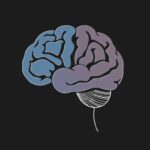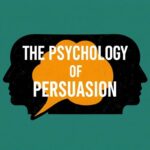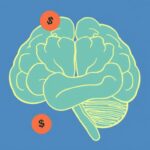When we think about jury trials, the image that often comes to mind is a group of impartial citizens carefully weighing the evidence before reaching a fair decision. However, the reality of how jury decisions are influenced is far more complex and fascinating. While the law imagines jurors as detached fact-finders, in practice, their verdicts are shaped by a variety of psychological, social, and situational factors. Understanding these hidden influences not only demystifies how verdicts are reached but also highlights the challenges in ensuring true justice within the courtroom. In this article, we will explore the many dimensions that shape jury decisions, from the impact of individual biases to the subtle power of group dynamics.
The Role of Cognitive Biases in Jury Decisions
Every juror walks into the courtroom with their own set of experiences, beliefs, and mental shortcuts—known as cognitive biases—that inevitably influence how they interpret evidence. These biases can subtly favor one side or another without the juror being consciously aware of it. For example, confirmation bias leads jurors to favor information that confirms their initial impressions while discounting evidence that contradicts their beliefs. This can skew the entire evaluation process.
Another common psychological filter is the availability heuristic, where jurors judge the likelihood of events based on how easily examples come to mind. If a certain type of crime has been the focus of extensive media coverage, jurors might give undue weight to its perceived prevalence, impacting their objectivity. Anchoring bias also plays a role when the first piece of information—such as the prosecution’s opening statement or initial evidence presented—sets a mental benchmark that influences all subsequent judgments.
Social Dynamics Within the Jury Room
Once deliberations begin, the social psychology of group decision-making takes center stage, transforming what might have been individual opinions into a collective verdict. Jurors are influenced by their peers through mechanisms like conformity, group polarization, and dominance by influential personalities. The desire to reach consensus can push jurors to adjust their views, sometimes at the cost of their own convictions.
Research shows that some jurors naturally adopt leadership roles during deliberations, guiding the discussion and swaying others. These individuals often use rhetorical strategies, appeal to emotion, or present logical arguments to persuade peers. On the other hand, minority jurors might suppress dissenting opinions, especially if they feel socially isolated or intimidated. This dynamic can lead to premature unanimity or “groupthink,” where critical evaluation is sacrificed for harmony.
The Influence of Extralegal Factors
While the legal system intends for jury decisions to be based solely on the facts and the law, extralegal factors often come into play. These include characteristics of the defendant such as race, gender, socioeconomic status, and even appearance. Studies have shown that implicit biases related to these factors can affect jurors’ perceptions of credibility and guilt.
For example, defendants from marginalized communities might be unfairly judged due to stereotypes, leading to harsher verdicts or sentences. Similarly, the charisma or demeanor of witnesses and attorneys can influence jurors’ trust, regardless of the evidence. Even the setting of the trial—whether it’s a high-profile courtroom or a small-town venue—can affect jurors’ attitudes and decisions.
How Trial Presentation Affects Jurors
The way evidence is presented matters greatly in swaying jury decisions. Clear, compelling storytelling tends to resonate more than dry recitations of facts. Lawyers often craft narratives that cast their clients in either a sympathetic or culpable light, and jurors respond to these narratives emotionally as well as logically.
Visual aids like photographs, charts, and videos can make abstract or complex evidence more tangible and memorable. On the other hand, overly technical or confusing presentations risk alienating jurors or causing them to rely more heavily on biases or heuristics. The tone and demeanor of lawyers, including how they interact with witnesses and jurors, also shape perceptions.
Table: Factors Influencing Jury Decisions
| Factor Category | Specific Influences | Effect on Jury Decisions |
|---|---|---|
| Cognitive Biases | Confirmation bias, availability heuristic, anchoring bias | Skew interpretation of evidence, favor initial beliefs |
| Social Dynamics | Conformity, dominance by leaders, groupthink | Pressure to conform, suppression of dissenting opinions |
| Extralegal Factors | Defendant’s race, gender, socioeconomic status, appearance | Implicit prejudice, unfair judgments |
| Trial Presentation | Narrative framing, visual aids, lawyer demeanor | Enhance memorability, emotional influence |
The Impact of Jury Instructions and Legal Complexity
Jury instructions—the guidelines given by the judge that explain the relevant law—are crucial, yet often overlooked, elements influencing decisions. These instructions can be complicated and loaded with legal jargon, making it difficult for jurors to fully grasp their meaning. When jurors misunderstand or struggle with complex legal concepts, their decision-making process becomes more uncertain.
Some jurors may compensate by relying even more on intuition, biases, or the persuasiveness of attorneys, which undermines the ideal of rational deliberation based solely on law and evidence. Efforts have been made to simplify jury instructions with clearer language, but this remains an ongoing challenge in legal systems worldwide.
Psychological Stress and Decision Making in Jurors

Serving as a juror can be stressful, particularly in emotionally charged or lengthy trials. Jurors may experience fatigue, anxiety, and pressure because they know their decisions have serious consequences. Stress influences cognitive processing and can result in shorter attention spans, reduced patience, and impaired memory.
This psychological strain can alter jury decisions by making jurors adopt simpler decision strategies or rely on snap judgments rather than deliberate reasoning. Jury support programs and structured breaks during trials aim to alleviate this stress, but it is an inevitable factor that colors many verdicts.
List: Common Psychological and Social Factors Influencing Jury Decisions
- Pre-existing personal biases and stereotypes
- Persuasiveness and likeability of attorneys
- Group pressure during deliberation
- Emotional tone of trial narratives
- Complexity and clarity of legal instructions
- Jurors’ fatigue and emotional state
- Nonverbal cues from witnesses and lawyers
- Venue and atmosphere of the courtroom
Strategies to Minimize Undue Influence on Jury Decisions
Given the many external and internal influences on jurors, courts and legal professionals have developed strategies to promote fairer decisions. One approach is the rigorous jury selection process, known as voir dire, where attorneys question potential jurors to identify and exclude those with overt biases or conflicts of interest.
Trial consultants and experts in social psychology may assist lawyers in understanding juror psychology and crafting arguments that best address common influences. Jury instructions have been increasingly revised to be more understandable and emphasize the jurors’ obligation to focus strictly on evidence.
Furthermore, courts encourage jurors to take detailed notes and allow questions during trial to improve comprehension. Some jurisdictions even explore mixed juries with diverse backgrounds to balance out implicit prejudices.
The Role of Media and Public Opinion
In high-profile cases, media coverage and public opinion can indirectly affect jury decisions. Prospective jurors exposed to extensive media narratives may develop preconceived notions about guilt or innocence. Even when judges issue instructions to ignore outside information, it is almost impossible for jurors to remain entirely insulated.
This external pressure can influence jury selection, with attorneys seeking jurors who are less likely to be swayed by public sentiment. The rise of social media compounds these challenges, as information (or misinformation) spreads rapidly, shaping the perceptions of potential jurors long before the trial begins.
Technological Advancements and Their Impact on Jury Decisions
Modern technology provides both tools and challenges in the jury decision-making process. Digital evidence, such as emails, video footage, and metadata, offers concrete information but can also overwhelm jurors with volume and complexity. How this evidence is presented—through clear graphics or confusing raw data—can greatly impact jurors’ understanding.
Courtrooms now sometimes use virtual reality or 3D reconstructions to recreate crime scenes, helping jurors immerse themselves in the facts. While this can improve clarity, it could also emotionally bias jurors if the representation seems too vivid or dramatic.
Table: Common Jury Influences vs. Mitigation Strategies
| Influence | Mitigation Strategy |
|---|---|
| Implicit biases of jurors | Voir dire jury selection, diverse juries |
| Complex legal instructions | Clear, simplified instructions; juror questions |
| Groupthink and conformity | Encouraging open deliberation, anonymous polling |
| Overwhelming evidence presentation | Use of clear visual aids and summaries |
| Media influence | Change of venue, juror sequestration |
The Ethical Dimension of Jury Influence

Lawyers and judges face the ethical imperative to ensure trials are fair and juries are not unduly influenced by irrelevant factors. Manipulative tactics such as appealing solely to emotion or exploiting juror prejudices challenge the integrity of the justice system. Ethical trial advocacy demands a balance between persuasion and respect for impartiality.
Judges also play a critical role in monitoring courtroom conduct and issuing instructions that emphasize the legal standards jurors must apply. Failure to address potential influences can result in appeals and mistrials, underlining the importance of constant vigilance to protect the fairness of the jury system.
Future Directions: Research and Reform in Jury Decision Processes
Ongoing social science research continues to shed light on how jurors think and decide, offering valuable insights that could improve trial fairness. Innovative reforms being tested include allowing note-taking, providing jurors with written transcripts, and even moving toward professional juries or mixed panels of citizens and legal experts.
Technology may help with standardized comprehension checks and real-time feedback during deliberations. However, every change must carefully weigh the preservation of jury independence against the need for accuracy and fairness. The dynamic nature of jury influence remains a vital topic as societies strive to perfect their systems of justice.
Conclusion

Jury decisions are shaped by a complex interplay of cognitive biases, social dynamics, extralegal factors, and the ways evidence is presented and understood. Despite ideals of impartiality, jurors bring their own experiences, emotions, and limitations into the deliberation room, where group pressures and trial conditions further influence the outcome. Recognizing these hidden influences helps us appreciate the challenges in securing truly fair verdicts, and underscores why ongoing reforms and careful jury management are essential. By continuing to explore how jury decisions are influenced, the legal system can better protect justice while respecting the humanity of those entrusted with the responsibility to decide.




















